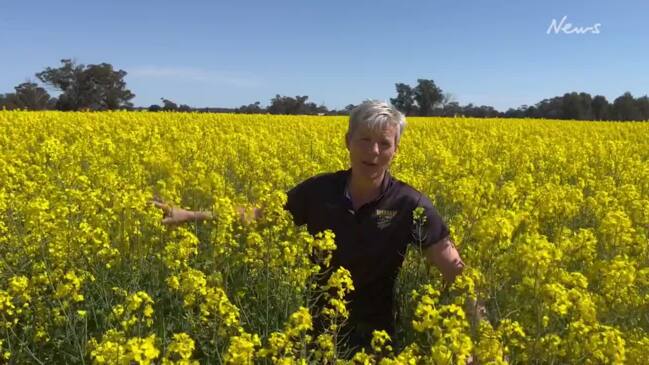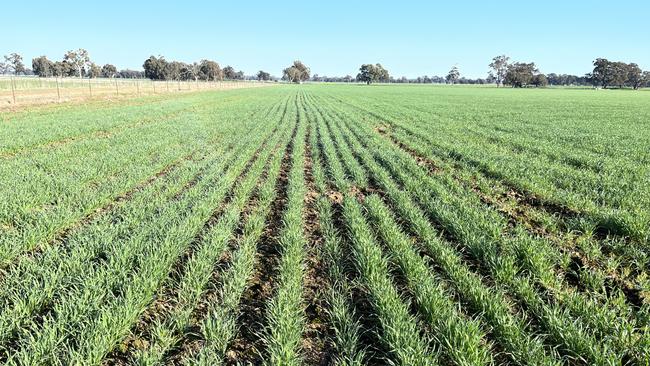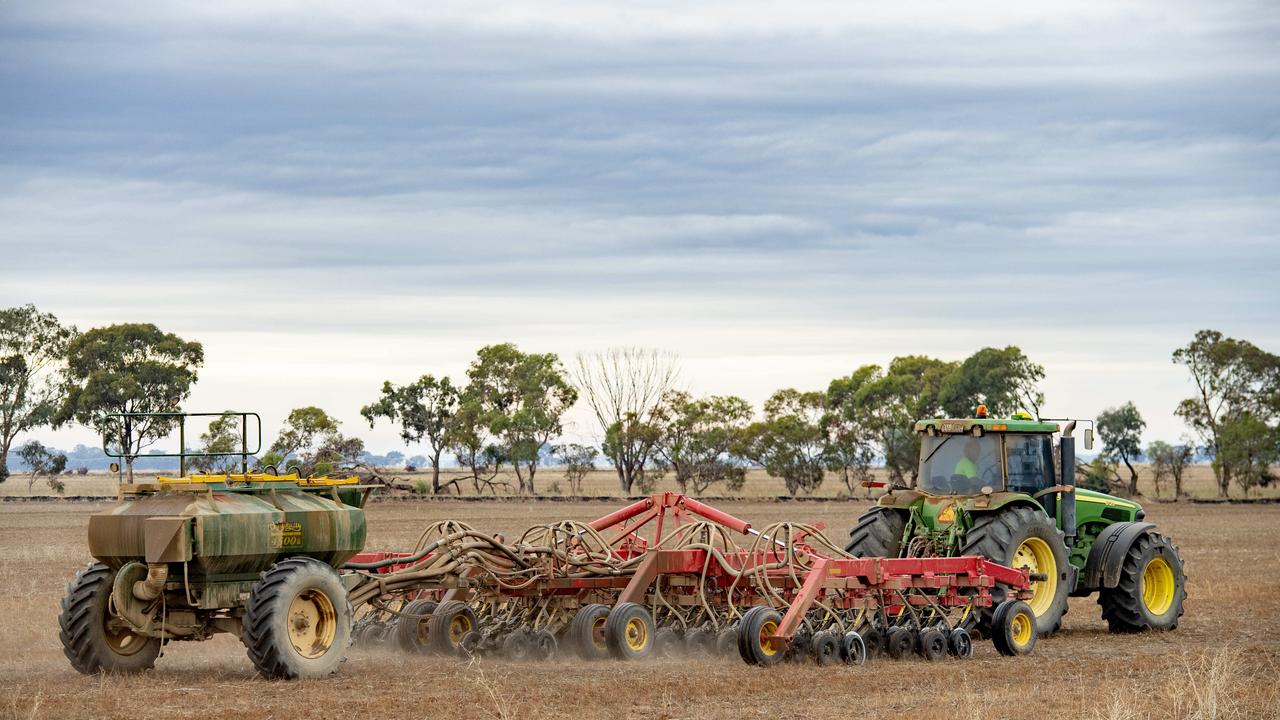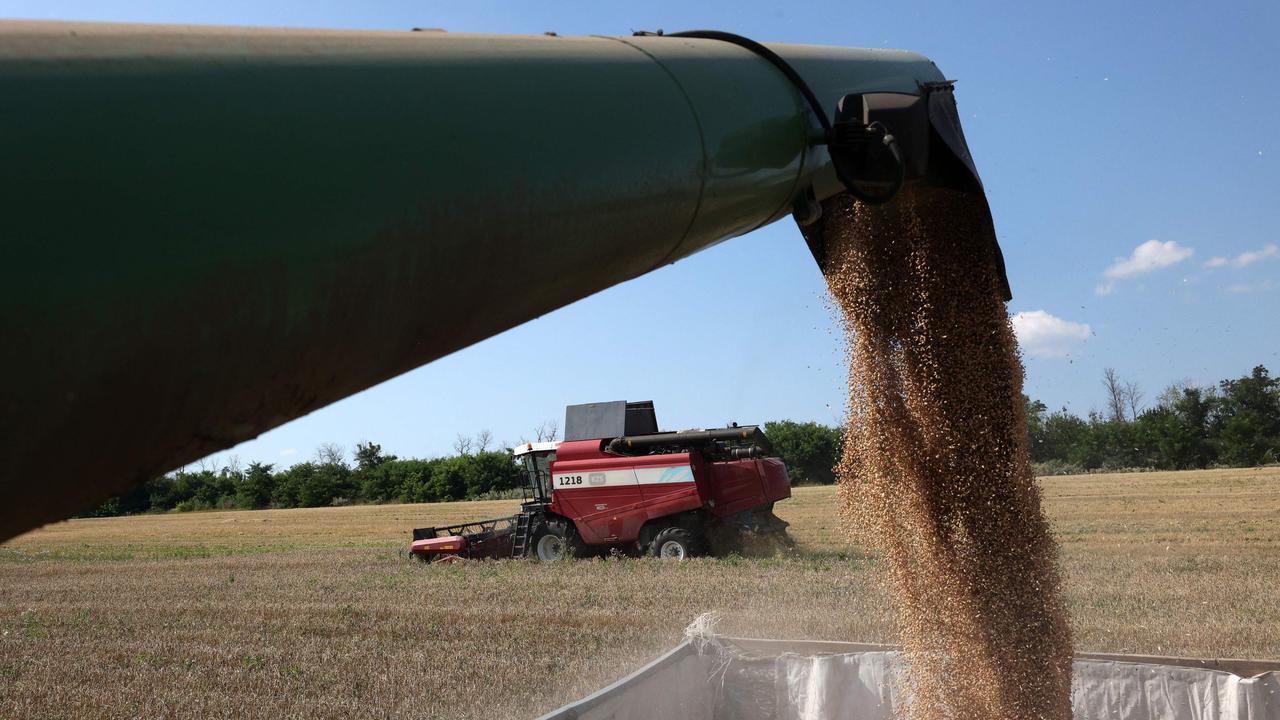The next two weeks will determine seasonal fate
Australia’s farming fortunes will be determined in the next two weeks as farmers wait for make-or-break rain.

Australia’s farming fortunes will be determined in the next two weeks as many wait for make-or-break rain.
With El Nino officially declared by the Bureau of Meteorology last week, fears of a dry finish for winter crops have intensified.
But rain would turn that around and, if it comes soon, could see above-average grain yields in much of southern Australia as well as boosting pastures.
Grain Producers Australia southern region director Andrew Weidemann, who farms at Rupanyup, said the season looked good “at the moment”.
“Even as we were having a quite wet winter, we always said we would need good spring rain,” Mr Weidemann said.
“In many areas, we have a big heavy crop and hot days like last week can suck the moisture out, even if we did have good moisture underneath.
“But we are happy with the season given the dry outlook from the Bureau of Meteorology earlier on.”
But even with spring rain, there’s little optimism around livestock, with key indicators sitting at the lowest levels in years.

The benchmark Eastern Young Cattle Indicator continued to fall and sits at 373c/kg carcass weight, and has lost 118c/kg in the past month alone.
And it’s even more diabolical for mutton, which closed on Monday at just 99c/kg carcass weight – 80 per cent lower than this time last year.
Euroa agent Mick Curtis from Rodwells at Euroa said it was difficult to fathom the dive in livestock prices given that many areas were still on the cusp of a good spring.
“Everything looks pretty good around here so it’s hard to believe what is going on with prices,” Mr Curtis said.
“In the northeast, hay will be cut and the crops look good and all the stock are going along condition-wise but each week we go on, prices get cheaper.”
Those in East Gippsland are not so fortunate, with frosts and little rain meaning some producers will have to start feeding stock soon.
Cattle and sheep producer Rick Crisp from Omeo said the winter had been dry after a wet few years.
“We could do with 25mm right now – but it feels like we are heading towards a dry time,” Mr Crisp said.
Mallee farmer Ben Rowney from Lascelles is also optimistic and pinning his hopes on predicted rain next week.
“Last year, we conserved all our moisture from the wet year and it would be very tough this year if we had not had that,” Mr Rowney said.
“Everything is looking really good but the warm weather has started to dry things out.
“We needed that warm weather to get things going but if we could get the 10-20mm forecast next week, it will definitely benefit the wheat and lentils but it’s probably too late for the barley.”
Kaniva farmer Jonno Hicks said there was still good soil moisture and yield potential in his area.
“If there is no rain on the horizon, it will be a different story, though,” Mr Hicks said.
He runs a 60/40 mix of broadacre crops and livestock and grows durum wheat, canola, barley and beans.
“Our early canola looks good, and it looks like it will finish strongly,” he said.
Jason Mellings, who farms at Carron between Donald and Warracknabeal, said while there was still a reasonable amount of soil moisture in the area “give it two to three weeks and it could be a completely different story”.
“It will get used up very quickly in the hot weather,” Mr Melling said.
“Hopefully there is enough there to get us home, but we’d love to see 20mm of rain tomorrow.”
Those who can snag a rain in the next couple of weeks look set to bank good returns, with prices for crops looking lucrative.
As of this week, canola prices were sitting at $677/tonne, wheat at $414/tonne and lentils as high as $990/tonne.
And while in southern NSW and Victoria, winter croppers are hoping for rain, further north, farmers are getting ready to put the header in paddocks at Moree, NSW.
Inverell, NSW, cattle and cropping farmer Martin Murray said conditions were dry.
“The crops are finishing near us, and out west, the (grain) receival sites are already open,” Mr Murray said.
Headers weren’t in the paddock at Inverell yet, but harvest to the north near Moree was imminent.
Mr Murray said he would start harvesting wheat before moving onto linseed after that.
“The linseed could certainly use a bit of rain,” he said.
This week, government and farmers groups and industry gather in Rockhampton for the biennial national drought forum.
Minister for Agriculture Murray Watt said the event would ensure better preparation for drought.
“With the recent El Nino declaration, we know that drought is inevitable sooner or later across this great land, but by sharing what works, partnering with one another to solve problems, and embracing new technology, we can reduce the impact on communities and help them bounce back faster.”
Meanwhile, across the Nullarbor, GPA chairman Barry Large, who farms north of Perth, WA, said it was a mixed bag for crops in his area.
Despite fears of El Nino, he said if there was one thing farmers had learned about weather forecasts, they weren’t always accurate.
“It frustrates everyone that we can’t predict the weather better than we do – can take it with a grain of salt,” Mr Large said.




